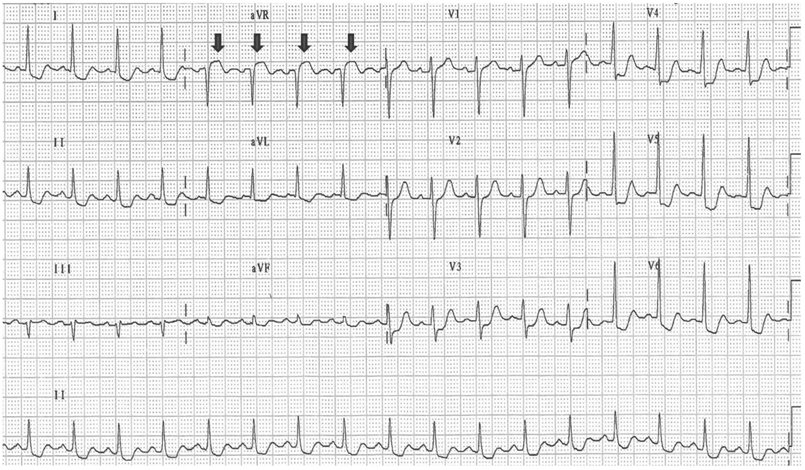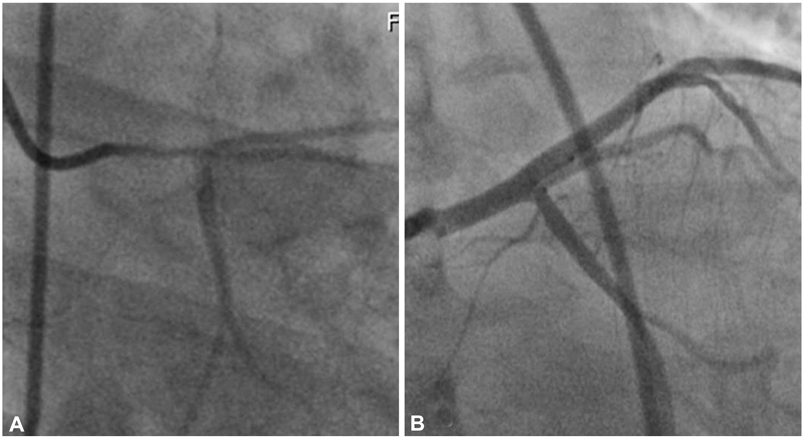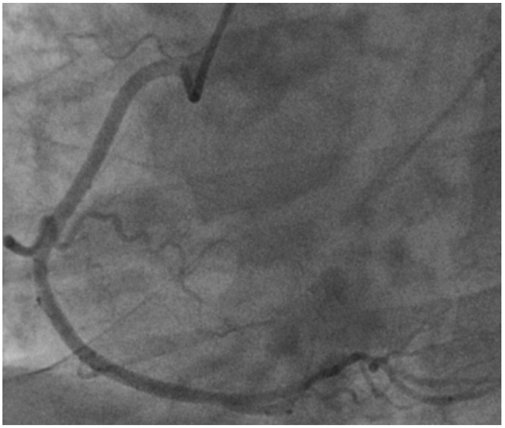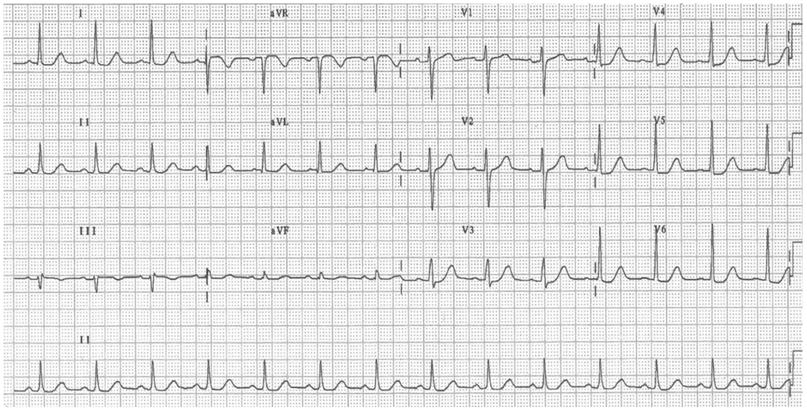Korean Circ J.
2012 Jan;42(1):50-53. 10.4070/kcj.2012.42.1.50.
A Case of Acute Myocardial Infarction With ST-Segment Elevation in a Lead Augmented Right Vector Caused by a Left Main Coronary Artery Vasospasm
- Affiliations
-
- 1Division of Cardiovascular Medicine, Department of Internal Medicine, Dankook University College of Medicine, Cheonan, Korea. neosoo70@dankook.ac.kr
- KMID: 2297908
- DOI: http://doi.org/10.4070/kcj.2012.42.1.50
Abstract
- Diagnosing and selecting an appropriate treatment strategy for left main coronary artery (LMCA) obstruction is very important. Although this disease is not frequently encountered, it can cause severe hemodynamic deterioration resulting in a less favorable prognosis without a suitable management approach. Another aspect of LMCA that we must not overlook is coronary artery spasm, which can be an infrequent but important cause of acute coronary syndrome. Although it is rare, LMCA can cause critical complications. In this study, we report the case of a 35-year-old female who was admitted to the hospital with a diagnosis of acute myocardial infarction with ST-segment elevation in the aVR lead caused by a left main coronary spasm that was examined on intravascular ultrasound.
MeSH Terms
Figure
Reference
-
1. Kosuge M, Kimura K, Ishikawa T, et al. Predictors of left main or three-vessel disease in patients who have acute coronary syndromes with non-ST-segment elevation. Am J Cardiol. 2005. 95:1366–1369.2. Duygu H, Yavuzgil O, Erturk U, Zoghi M, Ozerkan F. ST-segment elevation in lead augmented vector right may also be caused by diffuse left main coronary artery vasospasm without fixed stenosis. Clin Cardiol. 2008. 31:179–182.3. Engelen DJ, Gorgels AP, Cheriex EC, et al. Value of the electrocardiogram in localizing the occlusion site in the left anterior descending coronary artery in acute anterior myocardial infarction. J Am Coll Cardiol. 1999. 34:389–395.4. Yamaji H, Iwasaki K, Kusachi S, et al. Prediction of acute left main coronary artery obstruction by 12-lead electrocardiography: ST segment elevation in lead aVR with less ST segment elevation in lead V(1). J Am Coll Cardiol. 2001. 38:1348–1354.5. Ong P, Athanasiadis A, Hill S, Vogelsberg H, Voehringer M, Sechtem U. Coronary artery spasm as a frequent cause of acute coronary syndrome: the CASPAR (Coronary Artery Spasm in Patients with Acute Coronary Syndrome) Study. J Am Coll Cardiol. 2008. 52:523–527.6. Nikus KC, Eskola MJ. Electrocardiogram patterns in acute left main coronary artery occlusion. J Electrocardiol. 2008. 41:626–629.7. Kosuge M, Kmura K, Ishikawa T, et al. Combined prognostic utility of ST segment in lead aVR and troponin T on admission in non-ST-segment elevation acute coronary syndrome. Am J Cardiol. 2006. 97:334–339.8. Barrabés JA, Figureras J, Moure C, Cortadellas J, Soler-Soler J. Prognostic value of lead VR in patients with a first non-ST-segment elevation acute myocardial infarction. Circulation. 2003. 108:814–819.9. Nobuyoshi M, Tanaka M, Nosaka H, et al. Progression of coronary atherosclerosis: is coronary spasm related to progression? J Am Coll Cardiol. 1991. 18:904–910.10. Kuga T, Tagawa H, Tomoike H, et al. Role of coronary artery spasm in progression of organic coronary stenosis and acute myocardial infarction in a swine model: importance of mode of onset and duration of coronary artery spasm. Circulation. 1993. 87:573–582.11. Wakabayashi K, Suzuki H, Honda Y, et al. Provoked coronary spasm predicts adverse outcome in patients with acute myocardial infarction: a novel predictor of prognosis after acute myocardial infarction. J Am Coll Cardiol. 2008. 52:518–522.12. Edris A, Patel PM, Kern MJ. Early recognition of catheter-induced left main coronary artery vasospasm: implication of revascularization. Catheter Cardiovasc Interv. 2010. 76:304–307.
- Full Text Links
- Actions
-
Cited
- CITED
-
- Close
- Share
- Similar articles
-
- Precordial ST-Segment Elevation in Acute Right Ventricular Myocardial Infarction
- Accuracy of the Electrocardiographic Criteria for Predicting the Right or Left Circumflex Coronary Artery as the Culprit Coronary Artery in Acute Inferior Myocardial Infarction
- Differences in Clinical Outcomes Between Patients With ST-Elevation Versus Non-ST-Elevation Acute Myocardial Infarction in Korea
- Acute Myocardial Infarction by Right Coronary Artery Occlusion Presenting as Precordial ST Elevation on Electrocardiography
- A case of left main NSTEMI with ST segment elevation in lead aVR






